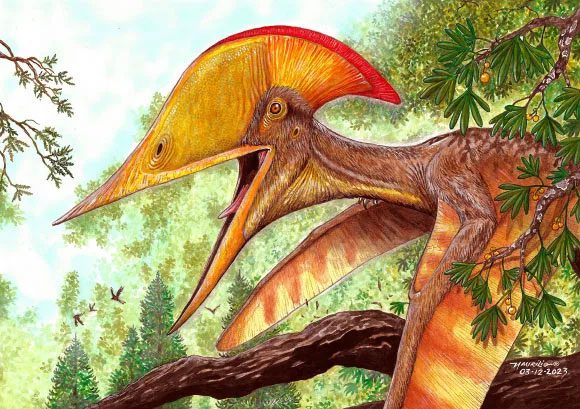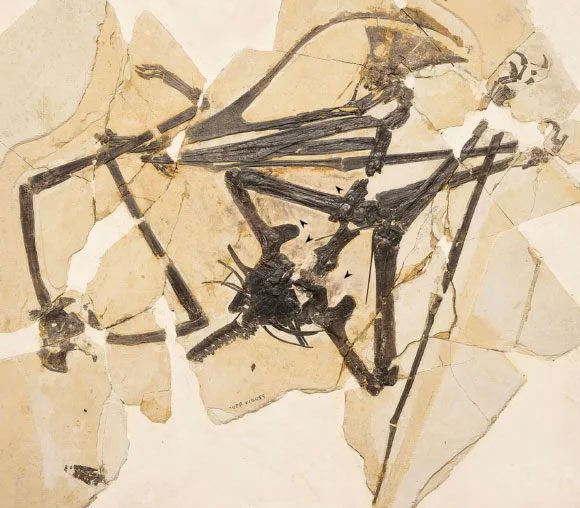A completely new flying monster has been excavated by Chinese-Brazilian paleontologists from the rocks of the Cretaceous period.
Named Meilifeilong youhao, this new creature is part of the Jehol Biota, a freshwater and terrestrial ecosystem preserved in ancient rock layers in Northeastern China.

Portrait of the flying monster Meilifeilong youhao – (Graphic: Maurilio Oliveira).
According to Sci-News, the fossils of two specimens were uncovered in the Jiufotang Formation in Hohhot, Liaoning Province, China, dating back to the early Cretaceous period, approximately 125-113 million years ago.
Despite having a wingspan of up to 2.16 meters, resembling that of a giant bird, these creatures are classified as reptiles.

Fossil of the monster Meilifeilong youhao – (Photo: Scientific Reports).
Analysis by the Chinese-Brazilian research team led by Dr. Xiaolin Wang from the Institute of Vertebrate Paleontology and Paleoanthropology (part of the Chinese Academy of Sciences) indicates that these creatures belong to the family Chaoyangopteridae.
Chaoyangopteridae is a group of medium-sized pterosaurs characterized by a high crest, primarily distributed across Asia.
One of the two specimens preserved in the rock is remarkably well-preserved, including most of the skeletal elements of the body. It is considered the most complete fossil of a Chaoyangopteridae species recovered to date.
Meanwhile, the fossilized skeleton of the second specimen includes only parts of the upper jaw and palate, belonging to a smaller individual.
However, it is precisely the bones of the mouth region that scientists are keen to study, as they help complete the missing pieces of the Chaoyangopteridae puzzle in Asia.
The research on the flying monsters in Liaoning has just been published in the journal Scientific Reports.


















































